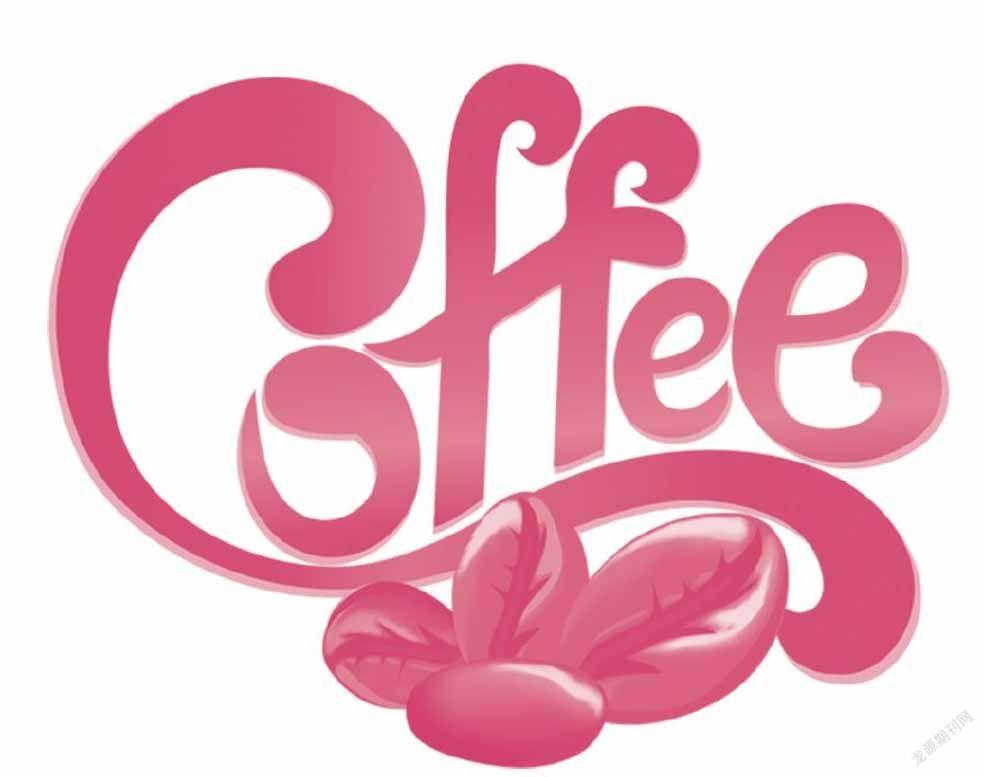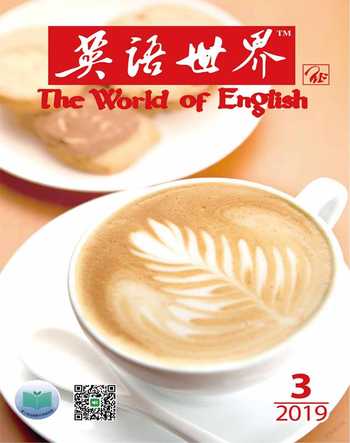The Culture of Coffee Drinkers咖啡文化
克丽丝特尔・德科斯塔 陈嘉仪 吴棋

Coffees offer us a way to look at our relationship to the larger world and see that sometimes our choices are not really our own, to think about how brands and larger market forces can help create what appear to be stable icons in our lives.咖啡為我们提供了一个视角,让我们观察自身与广阔世界的关系,明白选择并非总是由我们自己做主,并思考品牌和更大的市场力量如何能帮助我们创造出生活中那些看上去经久不衰的文化符号。
The idea of the morning person aside, morning commuters seem to fall into one of two categories: the Caffeinated and the Un-caffeinated—the latter category being those who intend to consume coffee, but haven’t quite gotten their morning java1 yet. And they’re easily recognizable as such. The Caffeinated are bright-eyed and engaged with the day’s events already—they’re reading their morning papers, or checking email, or reading for pleasure. They’re sometimes armed with travel mugs2 or Ventis3 from their coffee shop of choice. They rattle4 the ice in the clear plastic beverage cups from mobile vendors5 on summer days. They walk a little faster in the early hours having long left last night behind.
This is not the case for the Un-caffeinated. This group sleeps through the AM commute both on the commuter trains and the subway. They’re bleary eyed. Materials they intended to review lie unattended in their laps while they linger in the previous night. They walk more slowly up the stairs and are more irritable when you hurry them along—or hurry by them. They stroll, they trudge6, they linger.
Only grown ups drink coffee
Anthropologist William Roseberry reports that coffee drinkers would have been hard pressed to find specialty coffee in the United States in the 1970s—most of the coffee in the groceries came in cans, “the roasts were light and bland,” and the decaf7 versions were terrible. Coffee drinking had been on a decline.
Waning8 consumer interest was compounded by frost in Brazil in 1975, which drove the price of the beans higher. Consumer groups called for a boycott—they would not pay more for bland coffee. The market grew even smaller at the onset of the 1980s when coffee growers and retailers realized that the current 20-29 year old generation had little interest in coffee, which they associated with their parents and grandparents. This group preferred “soft drinks”. So-called “coffeemen” didn’t know what to make of them.
The “me” generation
For the coffee industry to survive, it needed a new marketing strategy. Kenneth Roman, Jr., the president of Ogilvy and Mather9, one of the PR firms that supported Maxwell House10, made a suggestion: emphasize quality, value, and image by creating segmented products11 to increase appeal. The consumer was changing, and coffee-players needed to pay attention:
We are entering the “me” generation. The crucial questions “me” oriented customers will ask, of all types of products, are: “What’s in it for me? Is the product ‘me’? Is it consistent with my lifestyle? Does it fill a need? Do I like how it tastes? What will it cost me? Is it necessary? Can I afford it? Is it convenient to prepare? How will it affect my health?”
Coffees are a naturally diverse product; their value is derived from where they are grown, size and texture of the bean, and how they are processed and roasted. Once traded, they can be blended with coffees from other places to produce complex aromas and tastes that mark each brand as distinctive.
To emphasize value, quality, the consumer needed to be made more aware about what made coffee worth the price. And so the specialty coffee was born. The vision was a type of coffee to appeal to every person, including flavored coffees for the “soft drink generation.” Coffee for the aficionados12, the penny-counters, those on-the-go13, and certainly the senior community who were already strong supporters.
The office brew
People drink coffee because it means something to them: a flavor for everyone, a style for every lifestyle—we have methodically been taught to socialize over coffee, to look for a boost in productivity from this drink.
If you live in a large urban center like New York City, there is a demand for productivity at all hours. The office coffee machine serves two purposes: it’s a convenience for you, the coffee drinker, but it’s also a productivity booster for employers who want employees to get down to work when they arrive. We consume coffee as a means of performing the tasks we need to complete in the setting of the workplace. We use it to ward off14 boredom and fatigue. Perhaps there is a sense that carrying coffee or having it nearby confers15 the idea of productivity also. So not only are we drinking it to get us through the day’s activities, but we have it with us to seem like we’re busy and productive during times when we’re not actually working—it could almost be classified as a status symbol16.
Coffee: It’s personal
Over the years, coffee drinking seems to have moved farther away from the social activity that it initially appears to be. While people still frequent coffee houses for leisure activities, it’s far more likely to see a variety of folks working on laptops or reading, or doing some other form of productive work at coffee houses. The number who are there solely for social purposes seems very small.
We’re identified by the brand that we drink, by the coffee houses we frequent, and by the process by which the beans are grown and harvested. We tout17 words such as “Free-Trade” and organic. It is all about “me.” But as Roseberry concludes, these connections have been carefully structured by the market:
That is to say, my newfound freedom to choose and the taste and discrimination I cultivate, have been shaped by traders and marketers responding to a long-term decline in sales with a move toward market segmentation along class and generational lines ... we exercise those choices in a world of structured relationships, and part of what those relationships structure (or shape) is both the arena18 and the process of choice itself.
Coffees offer us a way to look at our relationship to the larger world and see that sometimes our choices are not really our own. The “me” that we have come to emphasize may be less personal than we realize.
你是個爱早起的人吗?
暂且撇开“晨型人”这一观念不谈,早晨上班族似乎分为两种类型:喝了咖啡的和没喝咖啡的——后者是指那些本想喝尚未喝上的人,很容易辨识。那些喝了咖啡的人精神焕发,已经开始一天的活动——读晨报、查阅电子邮件,或是看闲书。他们有时带着旅行杯或是从各自青睐的咖啡店中买的大杯咖啡。夏季,他们端着流动小摊上买的透明塑料杯饮品,把里面的冰块摇得咔哒作响。他们在清晨比别人都走得更快一点,早已摆脱了前一晚的睡梦。
但那些没喝咖啡的人就不是这样了。在通勤火车和地铁上,这群人能睡上一路。他们睡眼惺忪,本想拿来浏览的材料放在膝头,动都没动过,他们还待在昨夜的睡梦中。他们爬楼梯时总是比别人慢,当你催促他们或从他们旁边匆匆走过,他们都愈加焦躁。他们慢慢溜达,步履沉重,徘徊不前。
只有成年人才喝咖啡
人类学家威廉·罗斯伯里报告称:在20世纪70年代的美国,喝咖啡的人要找到特制咖啡相当困难——食品杂货店卖的咖啡大多是罐装,“烘焙咖啡都淡而无味”,并且脱咖啡因咖啡也很难喝。喝咖啡的风尚正日益衰退。
1975年巴西霜灾推高咖啡豆的价格,这使本就逐渐消退的咖啡消费兴趣进一步减退。消费者群体呼吁抵制咖啡,他们不会再为乏淡寡味的咖啡掏腰包。20世纪80年代肇始,咖啡市场变得更小。这时咖啡种植者和零售商意识到,20多岁的年轻人对咖啡毫无兴趣,只有他们的父母、祖父母那一辈人才会喜欢。这个群体更喜欢“软饮料”。而那些所谓的“咖啡人”并不能理解这些人。
“自我”时代
咖啡产业若想继续存活下去,就需要制定新的市场营销策略。奥美集团是为麦斯威尔咖啡出谋划策的公关公司之一,其总裁小肯尼恩·罗曼提出了如下建议:通过生产针对特定消费群体的产品,突出产品的质量、价值与形象,从而提升产品的吸引力。消费者在变,咖啡从业者需要注意到这一点:
我们正在进入“自我”时代。对于所有类型的咖啡产品,以自我为中心的顾客总是会问:“我能从中得到什么?它适合我吗?它符合我的生活方式吗?它能满足我的需求吗?我会喜欢它的口味吗?它会花我多少钱?买下它对我来说有必要吗?我买得起吗?它冲煮是否方便?它会对我的健康产生怎样的影响?”这些问题在他们看来至关重要。
咖啡是天然的多元产品。原产地、咖啡豆的大小质地及加工炒制都会影响咖啡的价值。一经交易,不同产地的咖啡可被混合在一起以产生混合芳香与口味,从而使每一种咖啡品牌各具特色。
为了突显咖啡的价值与质量,需要让顾客进一步了解是什么让咖啡值这个价钱。特制咖啡由此应运而生。他们的理想是为每一个人提供适合其饮用的咖啡,包括适合“软饮料一代”的调味咖啡。无论是咖啡控、节俭者、忙碌者还是本就酷爱喝咖啡的老年人,都能找到适合自己的咖啡。
办公室饮品
人们之所以喝咖啡是因为这对他们而言有某种意义:一种适合每个人的风味,一种适合每种生活方式的风尚——我们一点点学会了通过咖啡来社交,并希望通过咖啡这种饮料来迅速提高生产效率。
如果生活在像纽约市这样的大型城市中心区,就会发现那里无时无刻不要求生产效率。办公室里的咖啡机有两个作用:一是方便爱喝咖啡的人,二是帮助老板提升到岗员工工作效率的利器。我们在工作场所喝咖啡,是把咖啡当作完成必要任务的工具。我们用咖啡来驱除枯燥感与疲劳感。也许拿着一杯咖啡或者把咖啡放在边上,还显示出工作颇有效率的意味。因此,我们喝咖啡不仅是为了撑完一天的工作,也是为了让自己在实际上并没有工作的时候依旧看起来很忙、很高效——这几乎成了一种地位的象征。
咖啡:关乎个人
这些年来,喝咖啡似乎已超越了最初的社交活动的界限。虽然人们依旧常去咖啡馆休闲娱乐,不过在咖啡馆里,我们更有可能看到的是形形色色的人在用手提电脑办公、阅读,或者在做其他一些富有成效的工作。仅仅为了社交目的而去咖啡馆的人现在似乎不多见了。
我们喝的咖啡品牌、常去的咖啡馆以及咖啡豆种植与收获的过程无不带有自我的身份标志。我们标榜诸如“自由贸易”“有机”之类的词语,这些都关乎“自我”。但正如罗斯伯里所言,这种联系早已被市场精心建构:
也就是说,我新近获得的自由选择权、我所培养的口味和鉴别力,都是被商人和市场营销者塑造出来的。为了应对销售额的长期下降,他们依据阶层与代际差异对消费人群进行分类……我们在一个被建构过的关系世界中做出那些选择,而那些关系所构建(或塑造)的部分结果,就是我们做出选择的环境和过程本身。
咖啡为我们提供了一个视角,让我们观察与广阔世界的关系,明白选择并非总是由我们自己做主。我们所强调的“自我” ,也许并非我们想象的那样完全属于我们自己。
(译者单位:复旦大学奇境译坊)

